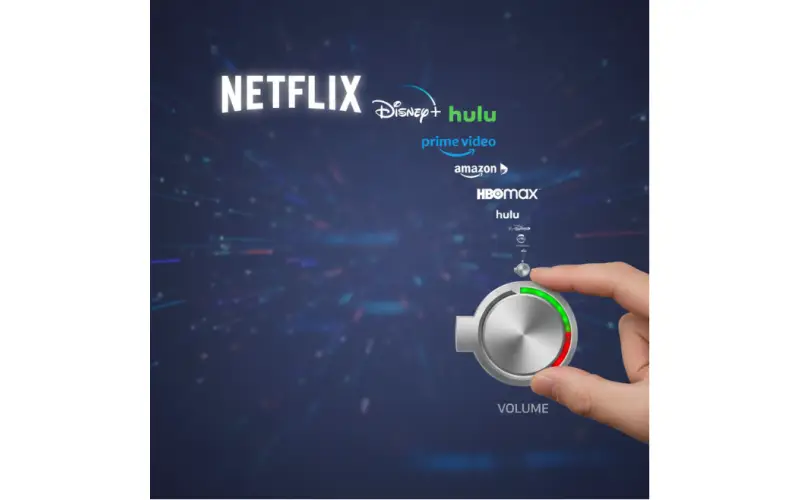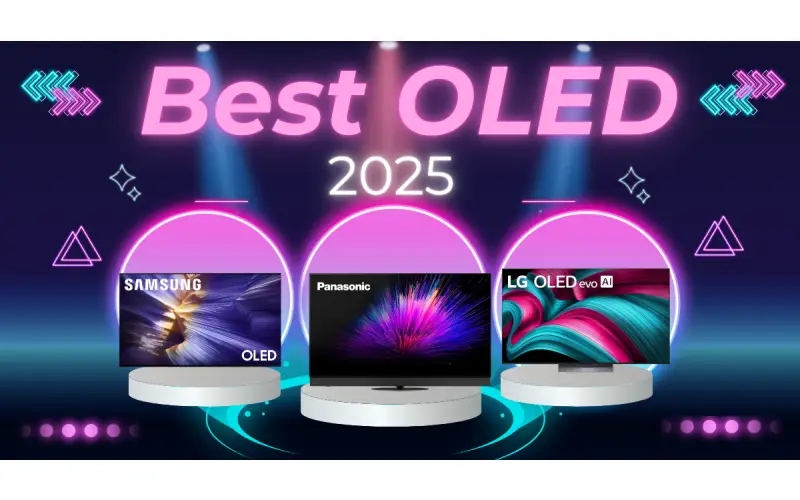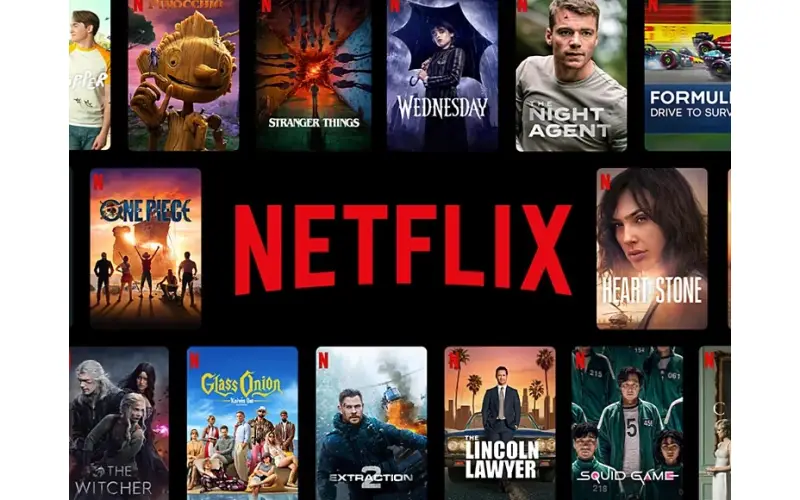By: Dipin Sehdev
In a notable move impacting the digital entertainment landscape, Amazon has begun systematically blocking applications on its Fire TV platform that are used for illicit streaming of copyrighted content. This policy shift highlights the escalating battle against digital piracy and prompts questions about user autonomy in an increasingly controlled ecosystem. The implications extend beyond Fire TV, touching upon broader trends in technology, including Nintendo's approach to the Switch 2, and the inherent risks of unauthorized software.
For some time, Amazon's Fire TV devices have presented a dual nature for content creators. While providing a convenient portal to legitimate streaming services, their Android-based OS has also been used for "sideloading"—installing applications from sources outside Amazon's official Appstore. This capability has been used by some to access free, albeit illegal, streams of various content. This practice, sometimes aided by online communities offering tutorials and pre-configured "jailbroken" devices, has been a persistent issue for content rights holders.
The Blocking Begins: Apps Identified and Security Concerns
Amazon's recent actions, reportedly the first time it has used its system-level blacklist to target piracy apps, have rendered at least four specific illicit streaming applications unusable: Blink Streamz, Flix Vision, Live NetTV, and Ocean Streamz. Users attempting to launch or install these apps now see a warning: "This app has been disabled because it can put your device or personal data at risk." The "Keep" option is unavailable, leaving "Uninstall" as the only choice. While Amazon has not yet released a detailed official statement on this blocking, the immediate effect is clear: these digital channels for pirated content are being shut down.
However, the situation may be more complex than a straightforward anti-piracy effort. Reports from sources like AFTVNews and TechDoctorUK suggest that at least some of the blocked applications, including Flix Vision, were not solely providing illicit streams. They were reportedly engaging in "riskware" behavior, using the Fire TV device's CPU and network resources to generate revenue through questionable methods, such as fake ad clicks or by potentially integrating devices into botnets. This exploitation of user hardware for financial gain, often without explicit consent, introduces a layer of legitimate security concern into Amazon's actions.
The presence of "riskware" underscores a significant aspect of the pirated content ecosystem. Unofficial apps, by their nature, bypass standard security vetting processes, making them potential conduits for malicious code. This could range from intrusive advertising and resource harvesting to more severe threats like data exfiltration or device hijacking. Amazon's "personal data at risk" warning, while potentially serving as a justification for its anti-piracy efforts, also highlights a real vulnerability for users in this environment.
Increased Scrutiny and Amazon's Strategic Direction
Amazon's increased enforcement follows growing pressure from content owners and industry analysts. A recent report from Enders Analysis placed some responsibility on tech companies like Amazon, Google, and Microsoft for not adequately addressing digital piracy. The report specifically mentioned Amazon for its perceived inaction on the Fire TV platform and criticized Google and Microsoft for not keeping their Digital Rights Management (DRM) solutions current.
Sky, a major UK broadcaster, has reportedly stated that illegal streaming via Fire TV devices has resulted in significant financial losses. Sky's chief operating officer, Nick Herm, also indicated that a notable percentage of Fire TV devices sold in the UK were "jailbroken." This scrutiny has likely prompted Amazon to take more assertive measures, not just to protect intellectual property but also to address reputational concerns and potential regulatory issues.
Beyond immediate responses, Amazon's actions also signal a broader strategic shift for the Fire TV platform. In 2025, Amazon plans to transition its Fire TV devices from the current Android-based Fire OS to its proprietary Vega OS. This change gives Amazon more control over the Fire TV ecosystem. Importantly, it will likely eliminate sideloading. All applications for Vega OS-based Fire TV devices will need explicit approval and rewriting for the new operating system, creating a more controlled environment.
This transition serves several purposes for Amazon. It allows for enhanced security and a more managed user experience, reducing opportunities for riskware and unapproved applications. It also gives Amazon greater influence in its relationships with content providers, as they will rely on Amazon's approval process to reach Fire TV users. Additionally, from a business perspective, it allows Amazon to optimize its advertising and content promotion strategies without interference from third-party launchers or unapproved apps. This move toward a more restricted platform suggests Amazon's intent to exert tighter control over its digital offerings, prioritizing its business objectives and its definition of the user experience.
The Broader Context of Digital Ownership: Nintendo's Approach
The implications of Amazon's actions resonate within the ongoing discussion about digital ownership. In a world where digital licenses are increasingly common, the concept of truly "owning" a device or its content is evolving. This sentiment is amplified by recent developments in the gaming industry, particularly with Nintendo's upcoming Switch 2 console.
Reports and updated user agreements for the Nintendo Switch 2 indicate a shift in Nintendo's policy, moving toward language that suggests a more conditional use rather than outright ownership. While Nintendo's previous user agreements have included clauses against unauthorized modification or piracy, the new terms for the Switch 2 appear more stringent. They reportedly grant Nintendo the right to "render the Nintendo Account Services and/or the applicable Nintendo device permanently unusable in whole or in part" if users violate the terms of service. This includes actions such as bypassing system protections, modifying software, or installing unauthorized applications.
This suggests that if a user attempts to modify their Nintendo Switch 2, run unauthorized games, or engage in certain unapproved alterations, Nintendo may remotely "brick" the console, making it inoperable. This goes beyond revoking online access; it indicates a company asserting significant control over a physical device that consumers have purchased. This language, where the company retains the ability to disable a device, affects the traditional understanding of product ownership and sets a precedent for other tech companies. It implies that even after a consumer buys a device, its functionality may remain dependent on adherence to the manufacturer's terms and conditions. The implications for repair, resale, and user modification are considerable, positioning consumers in a more reliant role within the digital ecosystem.
Alternative Streaming Device Options
With Amazon exercising more control over Fire TV, and a broader industry trend toward more managed ecosystems, consumers seeking greater flexibility or alternative streaming experiences have several options. Each platform offers distinct features, catering to different user preferences.
-
Roku Devices: Roku remains a strong competitor in the streaming device market, known for its straightforward interface and extensive app selection. Roku's strength lies in its neutrality; it does not heavily promote its own content, providing a more agnostic gateway to various streaming platforms.
-
Pros: Simple user interface, wide app selection, good search functionality, various device options from sticks to boxes.
-
Cons: Less emphasis on voice control compared to Amazon or Google, some advanced features like certain gaming capabilities are not present. Sideloading is not a feature of Roku's ecosystem.
-
Recommended Models: Roku Streaming Stick 4K, Roku Ultra.
-
-
Google TV (Chromecast with Google TV): Google's recent streaming platform offers a personalized experience, using Google's AI to suggest content based on viewing habits across various services. It integrates well into the Google ecosystem, suitable for users already using Google services.
-
Pros: Effective content discovery, strong voice search with Google Assistant, good integration with Google services, Android app compatibility (some sideloading is possible), support for various HDR and audio formats.
-
Cons: Can sometimes feel busy with content recommendations, the user interface might be more complex than Roku for new users.
-
Recommended Models: Chromecast with Google TV (4K or HD).
-
-
Apple TV 4K: For users within the Apple ecosystem, the Apple TV 4K offers a premium streaming experience. It features a capable processor, a refined interface, and smooth integration with Apple services.
-
Pros: Good performance, quality picture and sound (including Dolby Vision and Dolby Atmos), extensive app store, strong integration with other Apple devices, focus on privacy.
-
Cons: Generally more expensive than other streaming devices, limited sideloading capabilities (mainly for developers), primarily appeals to Apple users.
-
Recommended Models: Apple TV 4K (latest generation).
-
-
NVIDIA Shield TV: Considered a device for power users, the NVIDIA Shield TV is recognized for its gaming capabilities, robust hardware, and features like AI upscaling. It runs on Android TV, offering customization and access to numerous Android apps.
-
Pros: Good performance, gaming capabilities (including GeForce NOW cloud gaming), AI upscaling for a sharper image, supports Plex Media Server.
-
Cons: Higher price point, user interface may be less polished than Roku or Apple TV.
-
Recommended Models: NVIDIA Shield TV Pro.
-
-
Smart TVs with Integrated Platforms: Many modern smart TVs come with built-in streaming platforms like Samsung's Tizen, LG's webOS, or Google TV. These integrated solutions can provide a convenient experience, eliminating the need for an external device.
-
Pros: All-in-one solution, often well-integrated with TV features.
-
Cons: Performance can vary based on the TV's processor, app selection might be more limited than dedicated streaming devices, software updates can be slower, and long-term support can be inconsistent.
-
The choice of an alternative streaming device depends on individual needs and priorities. For simplicity and broad app support, Roku remains a viable option. For those seeking a personalized, AI-driven experience with Google integration, Google TV is a compelling choice. Apple TV caters to the premium Apple ecosystem user, while the NVIDIA Shield TV is for those who prioritize performance and gaming. As Amazon's Fire TV moves toward a more controlled environment, exploring these alternatives becomes relevant for users who value flexibility and a less restricted app ecosystem.
The Ongoing Discussion: Piracy, Control, and the Future of Digital Content
Amazon's recent actions, along with Nintendo's stringent terms for the Switch 2, highlight a core tension in the digital age: the ongoing effort between content creators seeking to protect their intellectual property and consumers desiring access and control over their devices. The challenges of addressing piracy are persistent, with technology continually evolving on both sides. As platforms become more restricted, the methods used to bypass restrictions may also adapt.
However, a trend is apparent: major tech companies are moving toward more controlled, proprietary ecosystems. This shift, driven by a desire for increased revenue, enhanced security, and tighter control over the user experience, sometimes comes at the expense of user freedom and the traditional concept of ownership. The future of digital content consumption may increasingly involve a model where access is granted, but ultimate control remains with the platform provider.
For consumers, this means a greater need for awareness and informed choices. Understanding the terms of service, the implications of "sideloading," and the potential risks of unofficial apps becomes important. It also encourages a consideration of alternative hardware and software solutions that align with individual preferences for openness and control. As digital platforms become more regulated, attention turns to those that still advocate for an open internet and consumer rights in an increasingly restrictive digital landscape.





